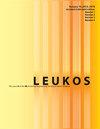光的流动:在办公环境中平衡方向性和CCT
IF 2.6
2区 工程技术
Q2 CONSTRUCTION & BUILDING TECHNOLOGY
引用次数: 7
摘要
人类的感知和视觉已经进化到对动态日光的响应,这是直接阳光和漫射天窗辐射的组合,它在直接:漫射分布,强度和光谱方面创造了光的变化流。本研究调查了在传统的漫射天花板上增加天花板上的射灯(32°倾斜角度)后,办公室内光线流动的质量。设计的目的是创造一个工作光流——在每个工作平面上都有一个光区——补充从窗户流入的自然光的方向性。实验在一间办公室里进行,分为两个部分。30个人测试了直射光和漫射光的四种比例。然后,15个人在阴天和晴朗的两种日光条件下,用高、中性和低色温的五种组合测试了一个比例。通过问卷调查、反应卡和半结构化访谈对办公环境的视觉光质量和感知氛围进行测试。工作平面的直射光建议大于总照度的15%,以提供清晰的造型视觉外观和舒适的氛围,更适合社交;小于45%,以避免视觉任务的眩光和高对比度。直接的暖光和漫射的冷光被认为是最自然的,但并不总是首选。有迹象表明,在晴朗的天空中,人们更喜欢凉爽的环境照明,而在阴天的情况下,人们更喜欢温暖的环境照明。特别是与天空条件有关的偏好需要进一步调查。实地研究将在响应日光水平和天空特征的双重动态照明概念中实现这些发现。发现了强烈的个人对色温组合的偏好,这为未来动态照明设计中的个性化光流开辟了新的研究领域。本文章由计算机程序翻译,如有差异,请以英文原文为准。
Flow of Light: Balancing Directionality and CCT in the Office Environment
ABSTRACT Human perception and vision have evolved in response to dynamic daylight, a combination of radiation from direct sunlight and diffuse skylight, which has created a flow of variations in light, in terms of direct:diffuse distribution, intensities and spectrum. This study investigates the qualities of the flow of light in an office after adding ceiling-mounted spotlights (32° tilt angle) to traditional diffuse ceiling panels. The intention is to create a flow of task light – a light-zone at each work-plane – complementing the directionality of the natural daylight inflow from the windows. An experiment was carried out in an office, in two parts. Four ratios of direct:diffuse light were tested by 30 people. Then one ratio was tested in five combinations of high, neutral and low color temperatures by 15 people in two daylight situations: overcast and clear sky. The visual light quality and perceived atmosphere of the office environment was tested through questionnaires, reaction cards and semi-structured interviews. The direct flow of light is recommended to be more than 15% of the total illuminance at the work-plane to provide the distinct visual appearance of modeling and a cozier atmosphere, which is preferable for socializing, and less than 45% to avoid glare and high contrast for visual tasks. Direct warm and diffuse cool lighting were perceived as the most natural but were not always preferred. There is an indication of slight preference for cooler ambient lighting in clear sky situations and warmer ambient lighting in overcast situations. Especially the preference in relation to sky conditions needs to be further investigated. A field study will implement these findings in a double dynamic lighting concept responding to daylight level and sky character. Strong individual preferences for combinations of color temperatures was identified, this open up new research areas for personalized flows of light in future dynamic lighting designs.
求助全文
通过发布文献求助,成功后即可免费获取论文全文。
去求助
来源期刊

Leukos
工程技术-光学
CiteScore
7.60
自引率
5.60%
发文量
19
审稿时长
>12 weeks
期刊介绍:
The Illuminating Engineering Society of North America and our publisher Taylor & Francis make every effort to ensure the accuracy of all the information (the "Content") contained in our publications. However, The Illuminating Engineering Society of North America and our publisher Taylor & Francis, our agents, and our licensors make no representations or warranties whatsoever as to the accuracy, completeness, or suitability for any purpose of the Content. Any opinions and views expressed in this publication are the opinions and views of the authors, and are not the views of or endorsed by The Illuminating Engineering Society of North America and our publisher Taylor & Francis. The accuracy of the Content should not be relied upon and should be independently verified with primary sources of information. The Illuminating Engineering Society of North America and our publisher Taylor & Francis shall not be liable for any losses, actions, claims, proceedings, demands, costs, expenses, damages, and other liabilities whatsoever or howsoever caused arising directly or indirectly in connection with, in relation to, or arising out of the use of the Content. Terms & Conditions of access and use can be found at http://www.tandfonline.com/page/terms-and-conditions .
 求助内容:
求助内容: 应助结果提醒方式:
应助结果提醒方式:


